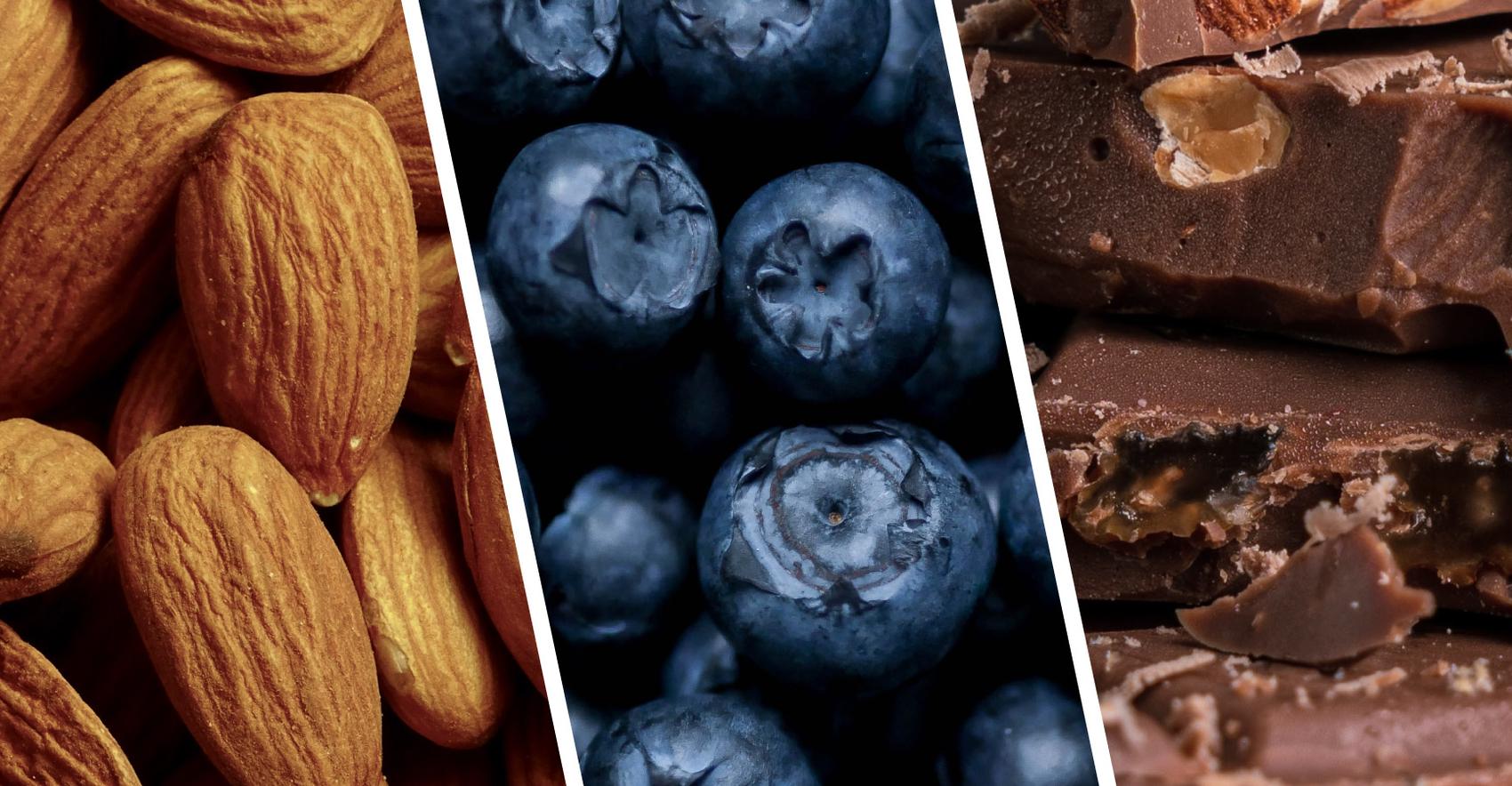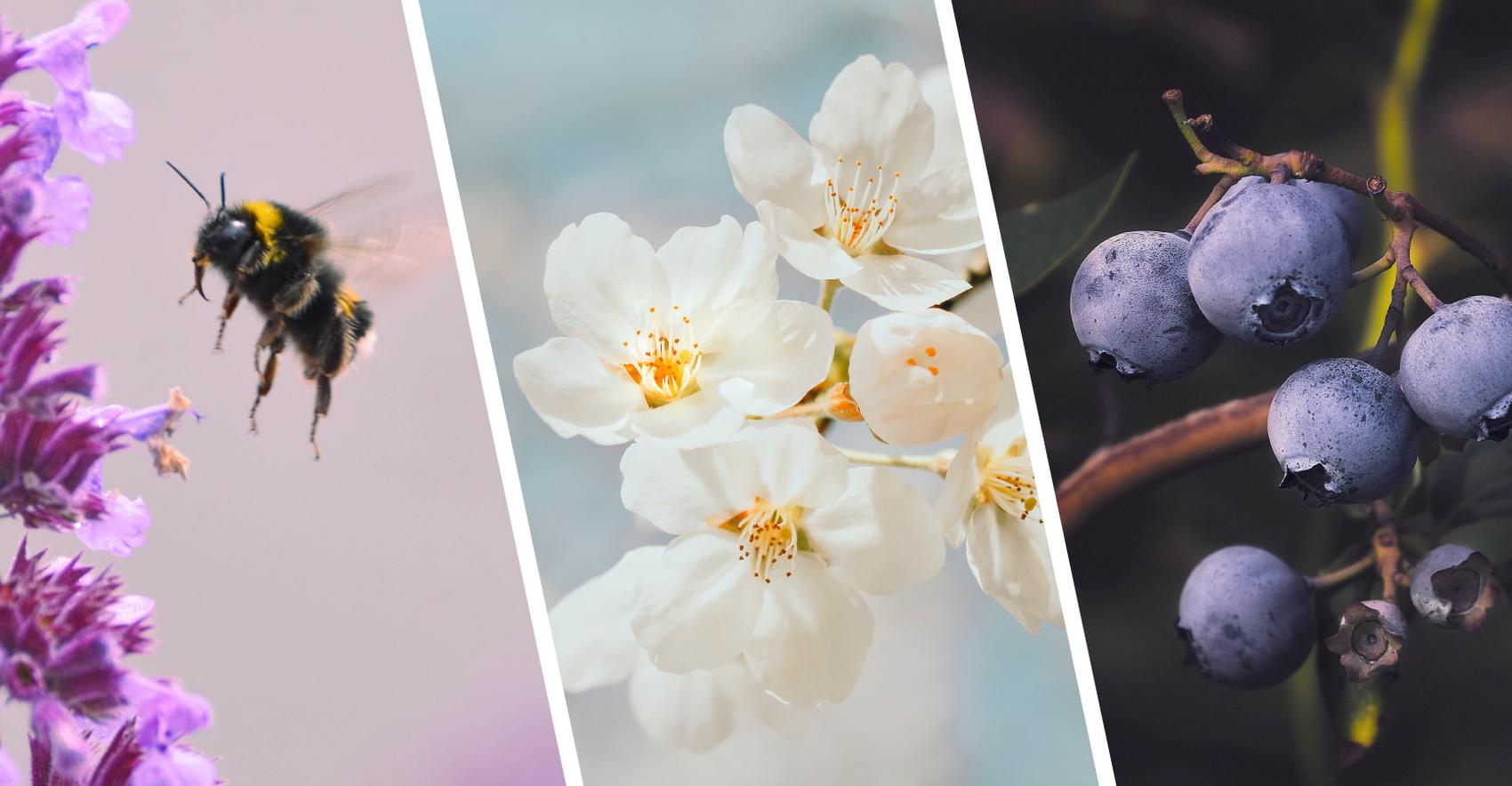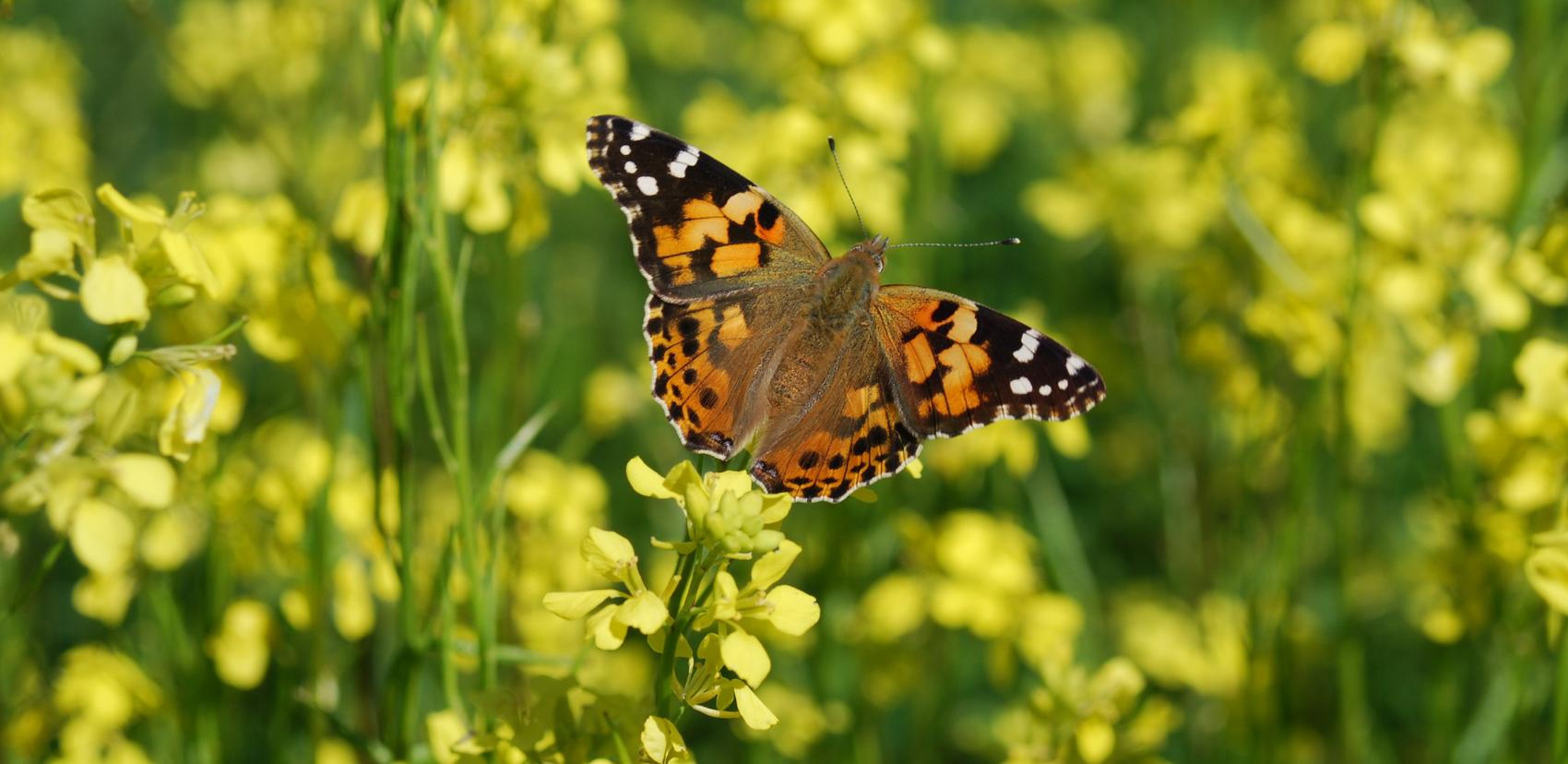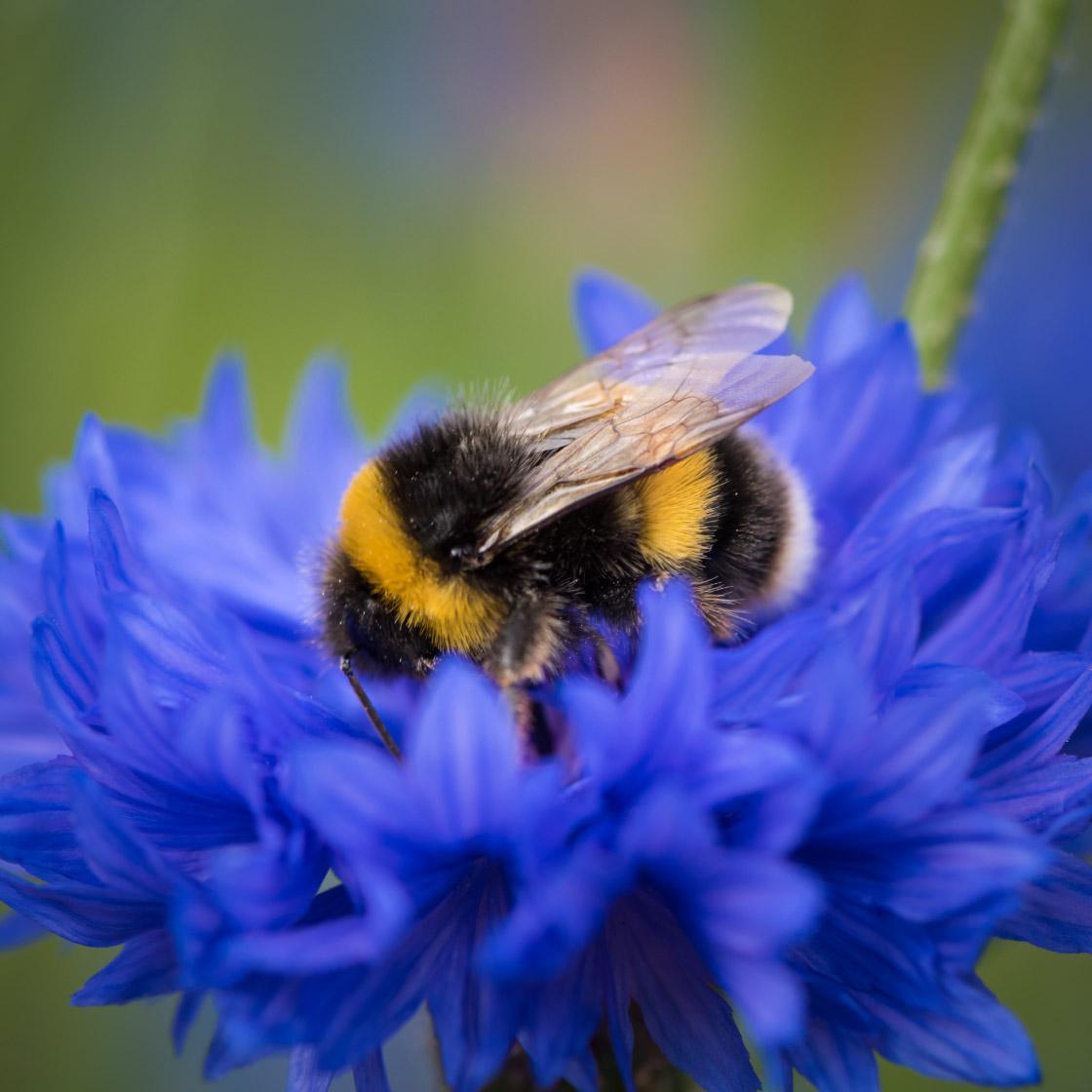With biodiversity under siege, even blueberries and chocolate could be at risk
By Carolyn Ali

Why a decline in insects matters to the supply of foods we love
Spring is the season for the birds and the bees… but when was the last time you thought about pollination? Those bees that are buzzing around apple and cherry blossoms are there for a reason. Many of the fruits and vegetables we eat must be pollinated by insects — a key step in producing food like apples, blueberries, squash, almonds and even cacao, the seeds from which we make chocolate.
Without pollinators, we wouldn’t have these foods in abundance. And, like most plants and animals, the biodiversity of our pollinators is at risk.
“There’s a link between the diversity of the foods that you eat and wild biodiversity,” says Dr. Claire Kremen, a professor at UBC’s Institute for Resources, Environment and Sustainability, the Department of Zoology and the Biodiversity Research Centre. Dr. Kremen wants people to understand that the foods we take for granted come from a living system. “If we want to continue producing food for the foreseeable future, then we need to take care of the biodiversity that is providing us with a lot of benefits that we don’t necessarily see or think about every day.”

“In pretty much any group of plants and animals that you look at, about 25 per cent of the species are on the pathway to extinction.”
Dr. Claire Kremen
Institute for Resources, Environment and Sustainability, the Department of Zoology and the Biodiversity Research Centre, UBC
Globally, biodiversity is under siege. “A recent assessment has shown that in pretty much any group of plants and animals that you look at, about 25 per cent of the species are on the pathway to extinction,” says Dr. Kremen. “That’s a huge number.”
But that’s not all. “One of the most frightening things is that we used to worry chiefly about species that were classified as threatened or endangered. We weren’t worried about the common species,” she notes. “But now, even common species are declining. They may not be endangered yet, but we see signs of decline.”
Part of that biodiversity is pollinators — insects like native bees (bees other than the familiar honey bee), flies, beetles, moths and butterflies. These pollinators transfer pollen from one flower to another, leading to fertilization. (Here’s a refresher on how pollination works.)
Insect pollination results in a greater diversity of food with more nutritional value and access to a healthier diet. “We get more fruits, bigger fruits, more seeds and bigger seeds when there’s cross-pollination happening.”
While some crops like grains can self-pollinate, certain plants like blueberries, squash and watermelon rely heavily or exclusively on insect pollinators to produce fruit and vegetables. Canola, which is one of Canada’s most important crops, benefits from insect pollinators to produce the seeds that make the oil.
“If we don’t have those insect pollinators out there pollinating these crops, there would be less of these crops,” she explains. “There would be certain crops that you couldn’t get at all. There would be other crop products that would be astronomically expensive and much more of a luxury product.”
An extreme example, she points out, is a case in China in which overuse of pesticides resulted in the loss of insect pollinators for apples. People were employed to hand-pollinate the apples instead. But the cost of doing that in Canada would be prohibitive, she says. “We just wouldn’t produce apples in Canada any longer.”
“Every single part of the farming system relies on biodiversity.”
Dr. Claire Kremen
Pesticide use is a “huge factor” in the loss of biodiversity in pollinator groups. But the reasons for the loss of biodiversity in general are complex. They include habitat loss, degradation and isolation, pollutants, invasive species and climate change. “Every single part of the farming system relies on biodiversity,” she says. “Pollination is only one tiny piece of it.”
So what can we do to support biodiversity?

Here are a few places to start.
• Learn more about honeybee research and why pollinators matter
• Support local, sustainable food systems
• Create a pollinator-friendly garden and refrain from using pesticides
• Buy organic produce as much as you can
Carolyn Ali is a writer for UBC Brand and Marketing.
Feel free to republish the text of this article, but please follow our guidelines for attribution and seek any necessary permissions before doing so. Please note that images are not included in this blanket licence.




